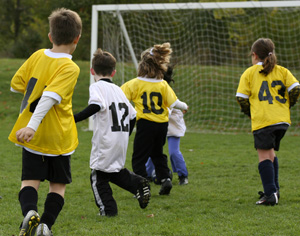Most Common Injuries

Each year, thousands of children are injured on playgrounds. Statistics from the U.S. Consumer Product Safety Commission reveal that these injuries cost the U.S. $9.8 billion in 1999.
The most common injuries that occur on playgrounds are (in order):
- Injury from swing
- Injury from climbing equipment
- Injury from slides
- Injury from see-saws and teeter-totters
Tips for playground safety
The American Academy of Orthopaedic Surgeons makes the following recommendations regarding playground and play area safety:
- Bars and handrails should be easy to grasp. All stairways should have rail heights appropriate for small children.
- Make sure the see-saws are not overly steep.
- Are
all stairs and steps evenly spaced and smooth?

- Platforms and raised areas need barriers — 4 feet for older kids and 30 inches for preschoolers.
- Playground surface should be soft — no asphalt or concrete areas.
- Check for gaps between the platform and the top of the slide chute.
- Hangers at top of swings should be more than 20 inches apart. Swings should be 2 feet apart and 30 inches from the support structure. No more than 2 swing should be placed adjacently in the same section.
- Slides over 4 feet tall should be 7 to 15 inches off the ground and should not have an incline greater than 30 degrees. Edges of the slide exit should be smooth.
- Overhead rungs need to be less than 12 inches apart for preschoolers and less than 15 inches apart for older kids. Make sure the rungs are fastened tightly.
- Make sure kids have adult supervision at all times.
- Be aware of the differences in size among children playing together.
